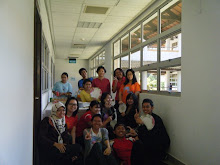Ingredients used
1. 500 mL of used cooking oil
2. 100 g of lye (NaOH)
3. 200 mL of water
4. 100 g of Melastoma malabathricum
5.100 g lime zest
Materials
1. Used cooking oil
2. Safety goggles
3. Rubber gloves
4. Lye (sodium hydroxide)
5. Weighing balance
6. Wooden spoon
7. Baking paper
Before we continue with our soap making, our group have conducted an odour removal process in order to remove the bad smell of the used cooking oil and also to remove the dissolved and undissolved impurities contained in the used cooking oil.. We have cut the ginger into pieces and fried it with the used cooking oil for about 30 minutes under low heat. Then we filtered it using vacuum filtration. We have found out that the colour of the used cooking oil was much lighter than before.
After that we continued with soap making .
METHODS FOR SOAP MAKING
1) The lye was weighed to 100 g and was added into a beaker containing 200 mL water. This was carried out in the fume cupboard.
2) The mixture of lye and water was then added into the beaker of purified oil.
Lye solution was poured into the purified oil.
3) The mixture was stirred for 15 minutes with a wooden spoon until the prepared becomes consistent.
Solution was stirred consistently
4) The mixture was left to cool for a little bit. 100 g of lime zest and juices was then added into the solution and stirred.
5)Also, melastoma malabathricum extract of about 100 g was also added into the solutions .
6) The solution was stirred continuously until it was thickened
The mixture was placed into different plastic mould and they were left to dry for two days. The soap was left to curate for another two weeks.
Safety precaution
As we were using caustic materials in soap making that is lye, we used wooden spoon in stirring the mixture to prevent melting. We should also use stainless steel containers which can withstand high temperature and alkalinity.
Jewellery was not to be worn while making soap because metal can react with the alkaline. Safety goggles and gloves should be worn all time when handling lye because lye is very corrosive and it can burn your hand. In addition, the lye was to be poured into water and not the other way around.
The soap should be left undisturbed by covering it with baking paper to complete the curing process.
done by :
Dirul
airul
vic
Liyana
.jpg)
.jpg)
.jpg)
.jpg)
.jpg)
.jpg)



















